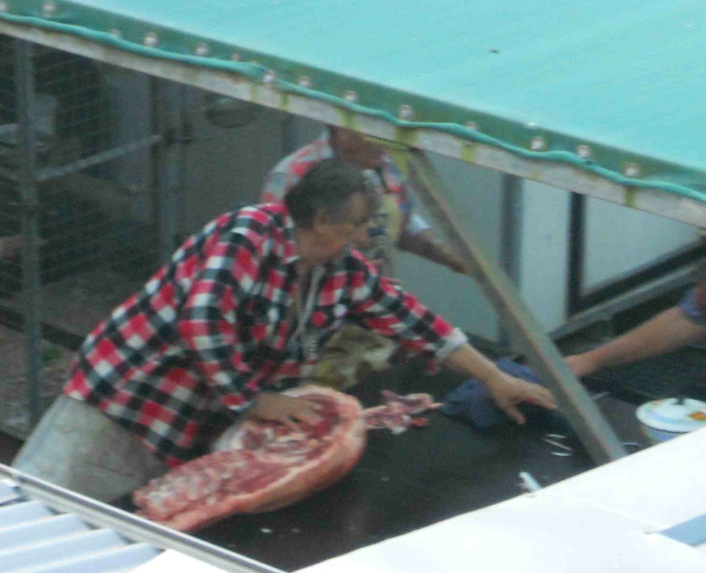Thanks to my French friend, Albert Amgar, for sending this along.
 Between Tuesday 1 September 2015 and Wednesday 2 September 2015, the health monitoring and emergency platform of the Regional Health Agency (ARS) of Haute-Normandie received reports of three suspected cases of collective food poisoning due to Salmonella.
Between Tuesday 1 September 2015 and Wednesday 2 September 2015, the health monitoring and emergency platform of the Regional Health Agency (ARS) of Haute-Normandie received reports of three suspected cases of collective food poisoning due to Salmonella.
These foodborne outbreaks were reported by local laboratories in the same geographical area of the Seine-Maritime (76) district. The first investigative elements contributed to identify that each of the three families had consumed traditionally-prepared ham purchased from the same delicatessen butcher within the 24 to 48 hours preceding the date of symptoms onset among the reported cases.
The epidemiological, microbiological and environmental investigations performed following this report identified a total of 68 cases, including 6 biologically confirmed cases. The results of the cohort study that followed indicated an association between the consumption of prepared meals which were purchased from a delicatessen butcher, and the risk of occurrence of salmonellosis.
Bacteriological analyses identified a strain of Salmonella typhimurium 4,12: i: – with the same Crispol type (CT 797), rarely identified until now. The veterinary survey highlighted several dysfunctions explaining a diffuse contamination of surfaces and tools in the premises and in the food produced by the butcher.
Investigation of a cluster of salmonellosis in the Seine-Maritime district linked to the attendance of a delicatessen butcher in September 2015
Rapport d’investigation. Saint-Maurice : Santé publique France ; 2016. 16 p.
N Nicolay, A Spillebout, M Blanchard, B Cottrelle






 the meat raw and make sure it is scent-free. Ask about who raised your meat—you want a purveyor known for extremely sanitary practices.”
the meat raw and make sure it is scent-free. Ask about who raised your meat—you want a purveyor known for extremely sanitary practices.”(1).jpg) separate counters, equipment and staff.
separate counters, equipment and staff. requirement to separate equipment for raw and ready-to-eat food, some are using alternative vacuum-sealing techniques for prepared meat, but others have decided to discontinue it altogether.
requirement to separate equipment for raw and ready-to-eat food, some are using alternative vacuum-sealing techniques for prepared meat, but others have decided to discontinue it altogether. Cambridge News reported today
Cambridge News reported today